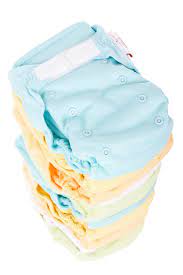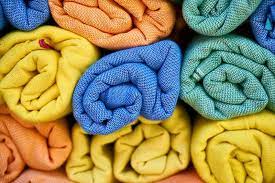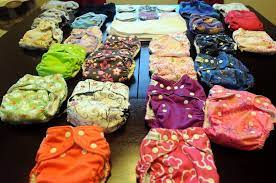Table of Contents
- Introduction
- Understanding the Basics of Cloth Diaper Fabrics
- The Comfort Quotient: Why Fabric Matters
- Cotton: The Timeless Classic
- Bamboo Bliss: Embracing Sustainability
- Microfiber Magic: Absorbency at Its Best
- Flannel Finesse: A Cozy Choice
- Hemp: The Durability Dynamo
- Stay Dry with Fleece: A Moisture-Wicking Marvel
- Choosing the Right Fabric for Your Lifestyle
- FAQ: Cloth Diapering Fabric Explained

- Introduction
In the dynamic world of modern parenting, choosing the perfect cloth diapering has taken center stage. A significant contributor to this renaissance is the multitude of cloth diapering fabrics available. This comprehensive guide aims to unravel the intricacies of cloth diapering fabric, offering insights into the characteristics, benefits, and nuances of each option. Armed with this knowledge, you can make a well-informed decision for your little one.
- Understanding the Basics of Cloth Diaper Fabrics
Before diving into the specifics of each fabric, it’s essential to understand the basics. The choice of fabric significantly influences comfort, absorbency, and overall durability. By gaining insight into the common materials used in cloth diapering, you lay a solid foundation for selecting the fabric that best suits your preferences and lifestyle.
- The Comfort Quotient: Why Fabric Matters
Fabric is more than just a covering; it’s a crucial factor in your baby’s comfort. Softness, breathability, and the overall feel contribute significantly to the well-being of your little one. This section will guide you through the considerations that make fabric a pivotal factor in cloth diapering.
- Cotton: The Timeless Classic
Cotton stands as the undisputed champion in the realm of cloth diapering fabrics. Known for its natural softness and absorbency, cotton provides a timeless and reliable choice for parents. The breathability of cotton is a notable feature, ensuring your baby stays comfortable throughout the day. Cotton diapers are easy to care for, making them an excellent option for busy parents.
Key Points:
- Natural softness and absorbency.
- Excellent breathability.
- Timeless and reliable choice.
- Easy to care for.
- Bamboo Bliss: Embracing Sustainability
As sustainability takes precedence in parenting choices, bamboo fabric emerges as a favored option for cloth diapers. Renowned for its eco-friendly properties, bamboo is a renewable resource that grows quickly without the need for pesticides. Bamboo diapers offer a silky-smooth texture and excellent absorbency. They are biodegradable, making them an environmentally conscious choice.
Key Points:
- Eco-friendly and sustainable.
- Rapidly renewable resource.
- Silky-smooth texture.
- Biodegradable.
- Microfiber Magic: Absorbency at Its Best
When it comes to exceptional absorbency, microfiber takes the spotlight. This synthetic fabric is designed to wick moisture away from your baby’s skin, keeping them dry and comfortable. Microfiber diapers are often chosen for overnight use due to their unparalleled absorbent capabilities. However, it’s crucial to note that microfiber can compress over time, affecting its performance.
Key Points:
- Exceptional moisture-wicking.
- Ideal for overnight use.
- Potential compression over time.
- Flannel Finesse: A Cozy Choice
If warmth and coziness are your top priorities, flannel is a fabric that embraces these qualities. Flannel diapers provide a soft and cozy feel, making them an ideal choice for colder seasons. While they may not be the go-to option for warmer climates due to their insulating properties, the comfort they offer is unmatched.
Key Points:
- Soft and cozy feel.
- Ideal for colder seasons.
- Not recommended for warmer climates.
- Hemp: The Durability Dynamo
For parents seeking durability, hemp fabric stands out as a reliable choice. Known for its strength and resilience, hemp diapers can withstand numerous washes without losing their quality. While hemp tends to be thicker and coarser than some other fabrics, it softens over time, providing lasting comfort for your baby.
Key Points:
- Exceptional durability.
- Withstands numerous washes.
- Becomes softer over time.
- Stay Dry with Fleece: A Moisture-Wicking Marvel
When the focus is on keeping your baby’s skin consistently dry, fleece emerges as a moisture-wicking marvel. Fleece diapers create a barrier that prevents moisture from reaching your baby’s skin, offering an effective solution for maintaining dryness. This fabric is often chosen for its breathability and ease of cleaning.
Key Points:
- Effective moisture-wicking.
- Creates a barrier against wetness.
- Breathable and easy to clean.
- Choosing the Right Fabric for Your Lifestyle
Selecting the ideal cloth diapering fabric goes beyond its characteristics. Consider your lifestyle and daily routine to find a fabric that aligns seamlessly with your needs. Whether you’re a parent on the go or a stay-at-home caregiver, understanding the practical aspects of each fabric ensures a harmonious cloth diapering experience.
You might be interested in this post as well “Healthy Baby Diapers Review”

- FAQ: Cloth Diapering Fabric Explained
Q1: What makes cotton a popular choice for cloth diapers?
A1: Cotton is a favored choice due to its natural softness and absorbency, providing a timeless and reliable option for parents. Its breathability ensures your baby stays comfortable, and it’s easy to care for, making it an excellent choice for busy parents.
Q2: How does bamboo contribute to sustainable parenting?
A2: Bamboo fabric is a sustainable option as it comes from a renewable resource that grows quickly without pesticides. It offers a silky-smooth texture and excellent absorbency. Bamboo diapers are biodegradable, making them an environmentally conscious choice for sustainable parenting.
Q3: Is microfiber a suitable fabric for overnight diapering?
A3: Yes, microfiber is an excellent choice for overnight use due to its exceptional moisture-wicking capabilities. However, it’s essential to be aware that microfiber can compress over time, potentially affecting its performance.
Q4: Can flannel be used in warmer climates?
A4: While flannel provides a soft and cozy feel, it may be better suited for colder seasons due to its insulating properties. Consider breathable fabrics for warmer climates to ensure your baby stays comfortable.
Q5: What makes fleece stand out in cloth diapering?
A5: Fleece stands out for its effective moisture-wicking properties, creating a barrier against wetness. It’s a breathable fabric and easy to clean, making it a marvel for enhancing the overall cloth diapering experience.
Q6: Are hemp diapers suitable for newborns?
A6: Hemp fabric is durable but tends to be thicker and coarser. While it softens over time, it might not be the gentlest option for newborns. Consider softer fabrics during the early stages and transition to hemp as your baby grows.
Q7: Can I use multiple fabric types in my cloth diaper stash?
A7: Yes, combining different fabrics in your cloth diaper stash offers versatility. You can use cotton for daytime comfort, microfiber for overnight absorbency, and hemp for long-lasting durability. Customize your stash based on your baby’s needs and your preferences.
Q8: How often should I wash cloth diapers made of different fabrics?
A8: The frequency of washing depends on the fabric type and usage. Cotton diapers may need washing every two days, while microfiber and fleece diapers may require more frequent laundering. Hemp diapers, known for durability, can withstand longer intervals between washes.
Conclusion
In conclusion, the world of cloth diapering fabrics is diverse, offering choices to suit every parent’s preferences and values. From the timeless comfort of cotton to the sustainable allure of bamboo, each fabric brings unique qualities to the table. By understanding these characteristics and considering your lifestyle, you can confidently choose a cloth diapering fabric that prioritizes your baby’s comfort and aligns with your parenting ethos. Happy and sustainable diapering!

